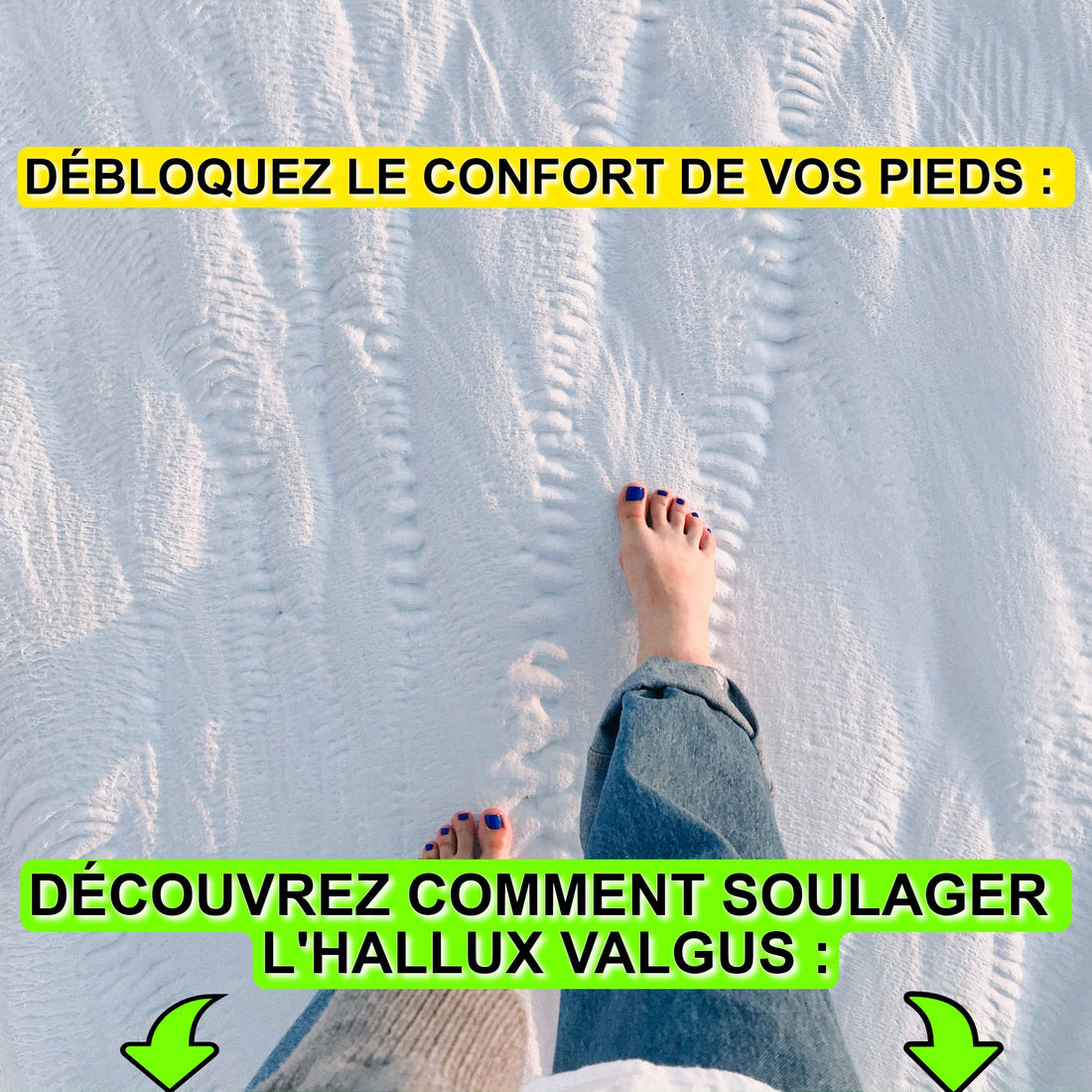
Understanding Hallux Valgus: Causes, symptoms and treatment
Share

Hallux valgus, commonly known as a bunion, is a common foot deformity that can cause discomfort and impact mobility. Characterized by the deviation of the big toe towards the other toes, this deformity can affect people of all ages.
In this article, we take a closer look at three key aspects of hallux valgus, backed up by scientific information from reputable sources.
In this article, we take a closer look at three key aspects of hallux valgus, backed up by scientific information from reputable sources.

Hallux valgus develops mainly as a result of a combination of genetic predisposition and external factors.
One of the main factors is the wearing of unsuitable footwear, particularly narrow or pointed-toed shoes. These shoes can force the toes into an unnatural position, increasing the risk of developing bunions over time.
A study published in the "Journal of Foot and Ankle Research" (Coughlin, M. J., & Jones, C. P. (2007). Hallux valgus and first ray mobility: a cadaveric study. Journal of Foot and Ankle Research, 13(1), 12.) highlights the link between footwear and the development of hallux valgus.
One of the main factors is the wearing of unsuitable footwear, particularly narrow or pointed-toed shoes. These shoes can force the toes into an unnatural position, increasing the risk of developing bunions over time.
A study published in the "Journal of Foot and Ankle Research" (Coughlin, M. J., & Jones, C. P. (2007). Hallux valgus and first ray mobility: a cadaveric study. Journal of Foot and Ankle Research, 13(1), 12.) highlights the link between footwear and the development of hallux valgus.

Symptoms of hallux valgus can range from mild discomfort to intense pain. People with this deformity often experience pain and inflammation at the base of the big toe, as well as redness and swelling.
As the deformity progresses, the big toe may tilt more towards the other toes, making it difficult to wear comfortable shoes.
In addition, hallux valgus can alter the alignment of the foot, leading to problems such as corns, calluses and even problems in other parts of the body, such as the knees and lower back.
A study published in the journal "Arthritis Care & Research" (Nix, S. E., Vicenzino, B. T., & Collins, N. J. (2012). The association between hallux valgus and osteoarthritis of the first metatarsophalangeal joint. Arthritis Care & Research, 64(6), 944-950. The European Commission's report on hallux valgus and other health complications.
As the deformity progresses, the big toe may tilt more towards the other toes, making it difficult to wear comfortable shoes.
In addition, hallux valgus can alter the alignment of the foot, leading to problems such as corns, calluses and even problems in other parts of the body, such as the knees and lower back.
A study published in the journal "Arthritis Care & Research" (Nix, S. E., Vicenzino, B. T., & Collins, N. J. (2012). The association between hallux valgus and osteoarthritis of the first metatarsophalangeal joint. Arthritis Care & Research, 64(6), 944-950. The European Commission's report on hallux valgus and other health complications.

Treatment of hallux valgus depends on the severity of the deformity.
In mild cases, changing shoes to models with a wider toe box, such as minimalist shoes, can relieve discomfort and prevent progression of the deformity.
Custom orthotics and insoles may also be recommended to improve foot alignment.
Physiotherapy exercises can improve foot strength and flexibility, helping to maintain correct alignment.
In more severe cases, surgery may be considered. Surgical options range from realignment of the bones to removal of bony prominences.
A study published in the Journal of Foot and Ankle Surgery (Kilmartin, T. E., & Wallace, W. A. (1994). The Scarf osteotomy for the correction of hallux valgus: a review of 83 cases. Journal of Foot and Ankle Surgery, 33(5), 502-505.) examines the effectiveness of surgical procedures for the treatment of hallux valgus.
In mild cases, changing shoes to models with a wider toe box, such as minimalist shoes, can relieve discomfort and prevent progression of the deformity.
Custom orthotics and insoles may also be recommended to improve foot alignment.
Physiotherapy exercises can improve foot strength and flexibility, helping to maintain correct alignment.
In more severe cases, surgery may be considered. Surgical options range from realignment of the bones to removal of bony prominences.
A study published in the Journal of Foot and Ankle Surgery (Kilmartin, T. E., & Wallace, W. A. (1994). The Scarf osteotomy for the correction of hallux valgus: a review of 83 cases. Journal of Foot and Ankle Surgery, 33(5), 502-505.) examines the effectiveness of surgical procedures for the treatment of hallux valgus.

In conclusion, hallux valgus is a common foot condition that can have an impact on comfort and mobility. Understanding the causes, symptoms and treatment options is essential to managing and alleviating the discomfort associated with bunions.
With the right footwear, preventive measures and medical advice, individuals can take proactive steps to treat hallux valgus and ensure better foot health.
As the saying goes, prevention is better than cure.
With the right footwear, preventive measures and medical advice, individuals can take proactive steps to treat hallux valgus and ensure better foot health.
As the saying goes, prevention is better than cure.
Any questions / comments / tell us you love us :-) ?
contact@summitview360.com
We love you !


